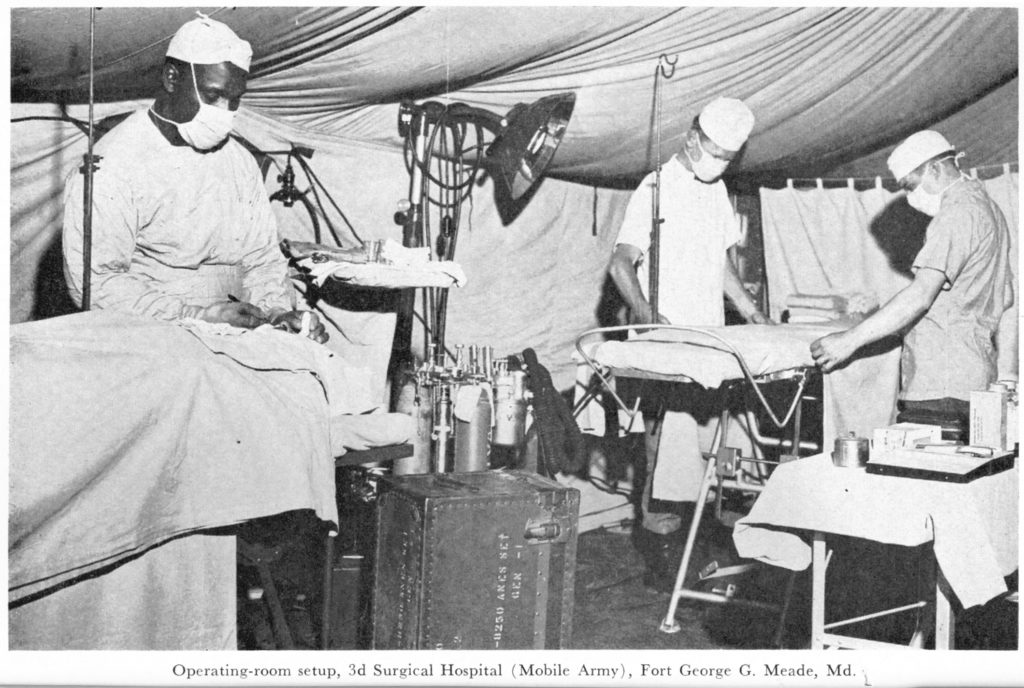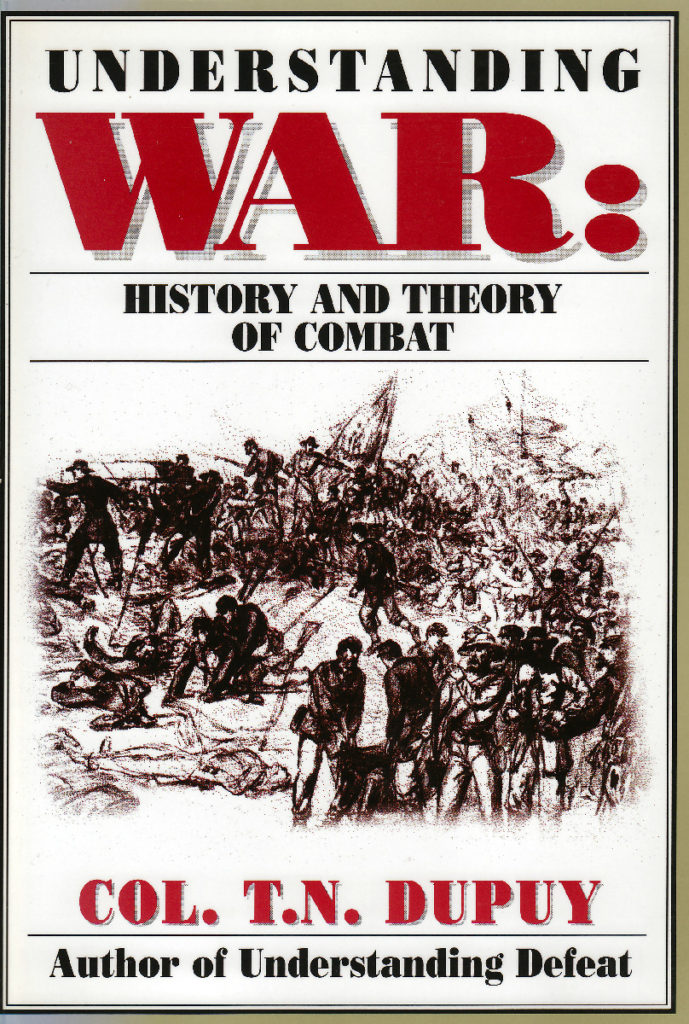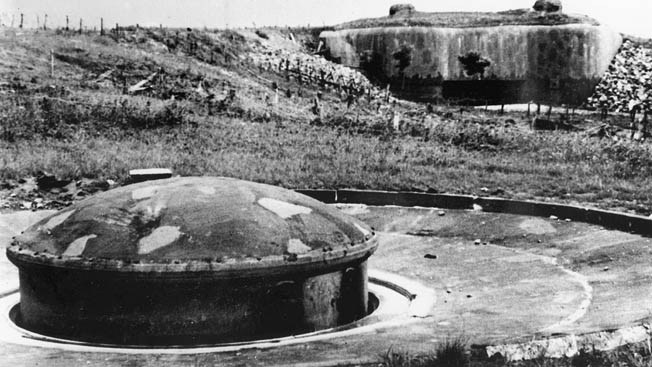
The sixth of Trevor Dupuy’s Timeless Verities of Combat is:
Defenders’ chances of success are directly proportional to fortification strength.
From Understanding War (1987):
To some modern military thinkers this is a truism needing no explanation or justification. Others have asserted that prepared defenses are attractive traps to be avoided at all costs. Such assertions, however, either ignore or misread historical examples. History is so fickle that it is dangerous for historians to use such words as “always” or “never.” Nevertheless I offer a bold counter-assertion: never in history has a defense been weakened by the availability of fortifications; defensive works always enhance combat strength. At the very least, fortifications will delay an attacker and add to his casualties; at best, fortifications will enable the defender to defeat the attacker.
Anyone who suggests that breakthroughs of defensive positions in recent history demonstrate the bankruptcy of defensive posture and/or fortifications is seriously deceiving himself and is misinterpreting modern history. One can cite as historical examples the overcoming of the Maginot Line, the Mannerheim Line, the Siegfried Line, and the Bar Lev Line, and from these examples conclude that these fortifications failed. Such a conclusion is absolutely wrong. It is true that all of these fortifications were overcome, but only because a powerful enemy was willing to make a massive and costly effort. (Of course, the Maginot Line was not attacked frontally in 1940; the Germans were so impressed by its defensive strength that they bypassed it, and were threatening its rear when France surrendered.) All of these fortifications afforded time for the defenders to make new dispositions, to bring up reserves, or to mobilize. All were intended to obstruct, to permit the defenders to punish the attackers and, above all to delay; all were successful in these respects. The Bar Lev Line, furthermore, saved Israel from disastrous defeat, and became the base for a successful offensive.[p. 4]
Will field fortifications continue to enhance the combat power of land forces on future battlefields? This is an interesting question. While the character of existing types of fortifications—trenches, strongpoint, and bunkers—might change, seeking cover and concealment from the earth might become even more important.
Dr. Alexander Kott, Chief Scientist at the U.S. Army Research Laboratory, provided one perspective in a recently published paper titled “Ground Warfare in 2050: How It Might Look.” In it, Kott speculated about “tactical ground warfighting circa 2050, in a major conflict between technologically advanced peer competitors.”
Kott noted that on future battlefields dominated by sensor saturation and long-range precision fires, “Conventional entrenchments and other fortifications will become less effective when teams of intelligent munitions can maneuver into and within a trench or a bunker.” Light dismounted forces “will have limited, if any, protection either from antimissiles or armor (although they may be provided a degree of protection by armor deployed by their robotic helpers… Instead, they will use cluttered ground terrain to obtain cover and concealment. In addition, they will attempt to distract and deceive…by use of decoys.”
Heavy forces “capable of producing strong lethal effects—substantial in size and mounted on vehicles—will be unlikely to avoid detection, observation, and fires.” To mitigate continuous incoming precision fires, Kott envisions that heavy ground forces will employ a combination of cover and concealment, maneuver, dispersion, decoys, vigorous counter-ISR (intelligence, surveillance, and reconnaissance) attacks, and armor, but will rely primarily “on extensive use of intelligent antimissiles (evolutions of today’s Active Protection Systems [APSs], Counter Rocket, Artillery, and Mortar [C-RAM], Iron Dome, etc.)”
Conversely, Kott does not foresee underground cover and concealment disappearing from future battlefields. “To gain protection from intelligent munitions, extended subterranean tunnels and facilities will become important. This in turn will necessitate the tunnel-digging robotic machines, suitably equipped for battlefield mobility.” Not only will “large static assets such as supply dumps or munitions repair and manufacturing shops” be moved underground, but maneuver forces and field headquarters might conceivably rapidly dig themselves into below-ground fighting positions between operational bounds.

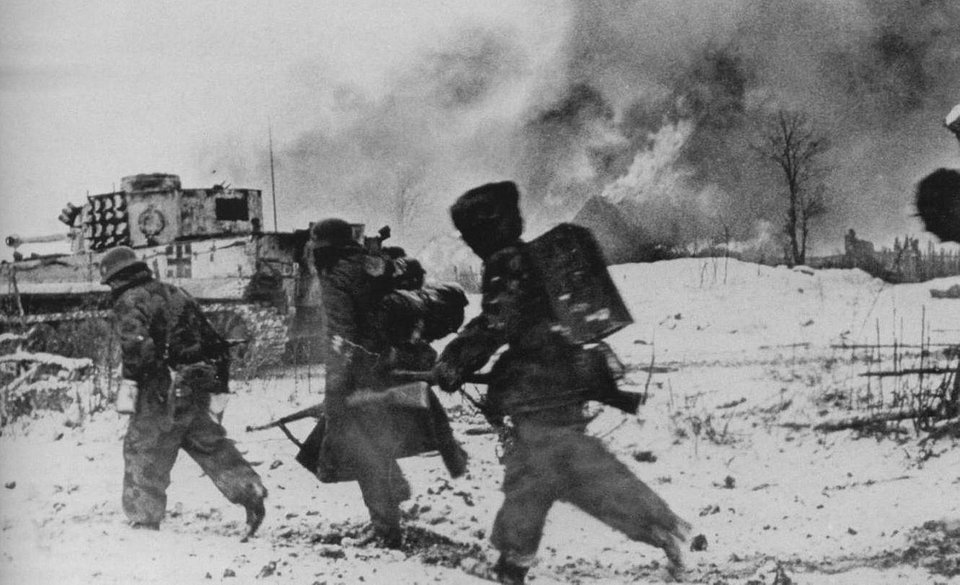

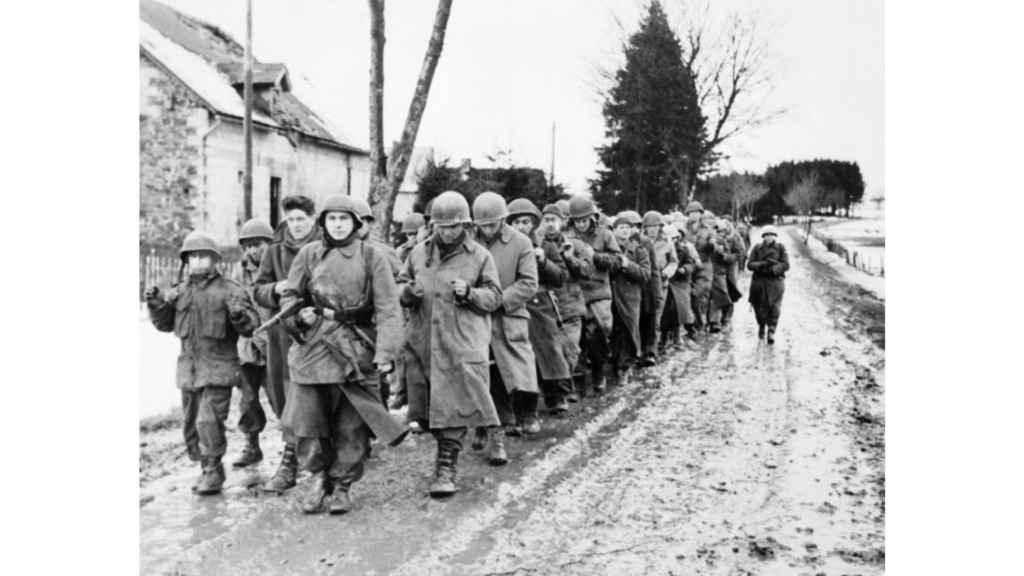

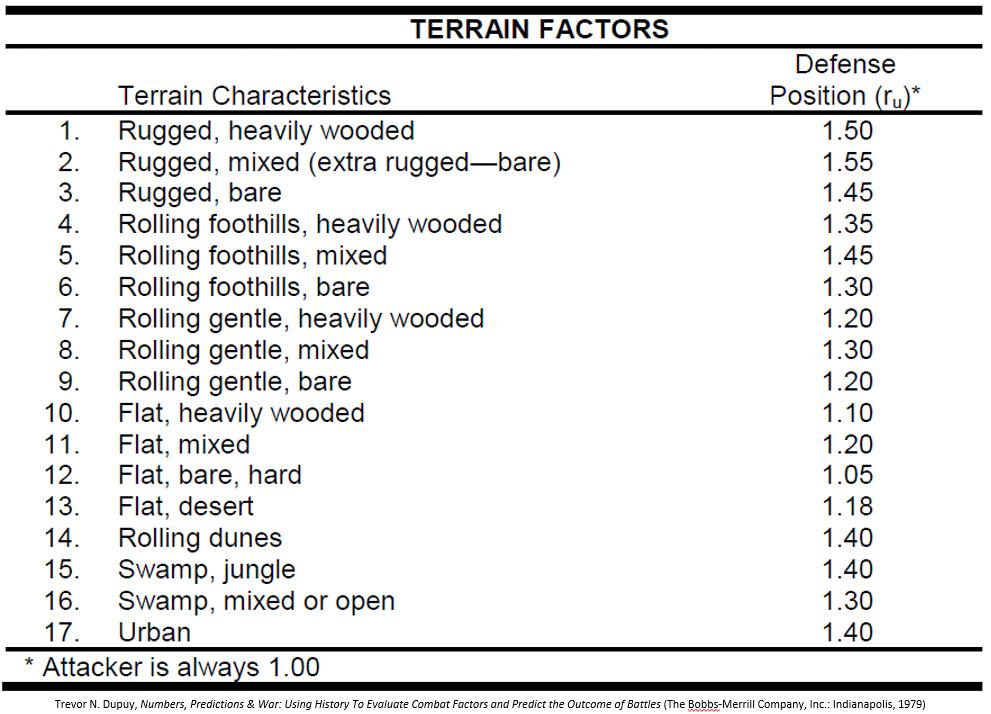


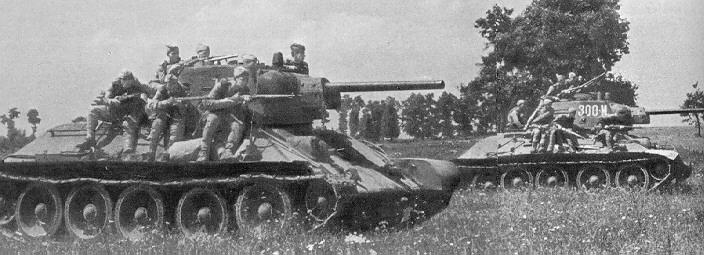 One of the basic processes of combat is movement. According to Trevor Dupuy, one of the most important outcomes of ground combat is advance against opposition. He spent a good amount of time examining historical advance rates, seeking to determine if technological change had led to increases in advance rates over time. On the face of it, he determined that daily rates had increased by about one-half, from about 17 kilometers per day during the Napoleonic Era, to about 26 kilometers a day by the 1973 Arab-Israeli War. However, when calculated by the duration of a campaign, average daily advance rates did not appear to have changed much at all over 200 years, despite the advent of mechanization.
One of the basic processes of combat is movement. According to Trevor Dupuy, one of the most important outcomes of ground combat is advance against opposition. He spent a good amount of time examining historical advance rates, seeking to determine if technological change had led to increases in advance rates over time. On the face of it, he determined that daily rates had increased by about one-half, from about 17 kilometers per day during the Napoleonic Era, to about 26 kilometers a day by the 1973 Arab-Israeli War. However, when calculated by the duration of a campaign, average daily advance rates did not appear to have changed much at all over 200 years, despite the advent of mechanization.